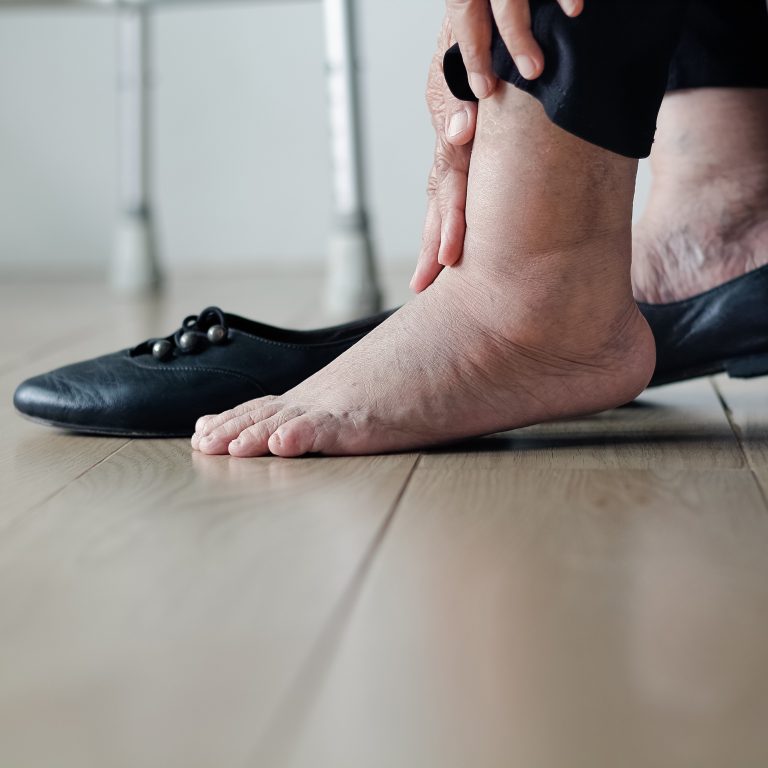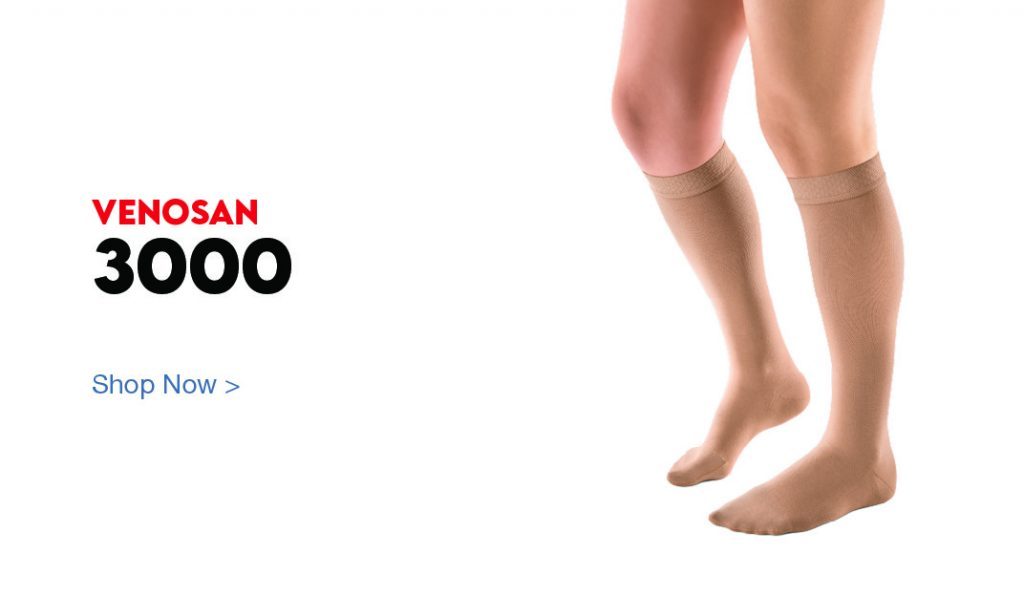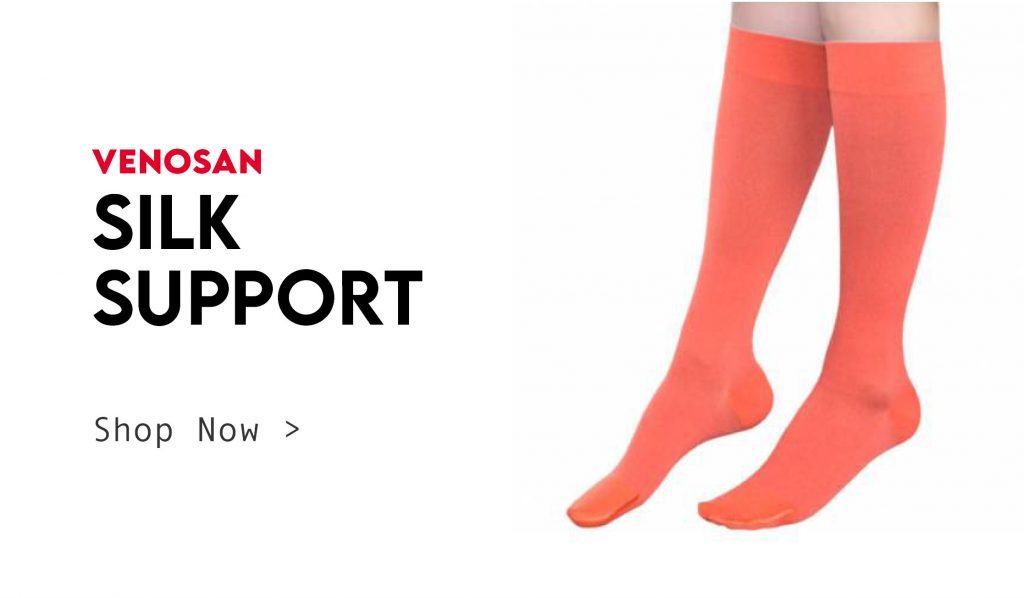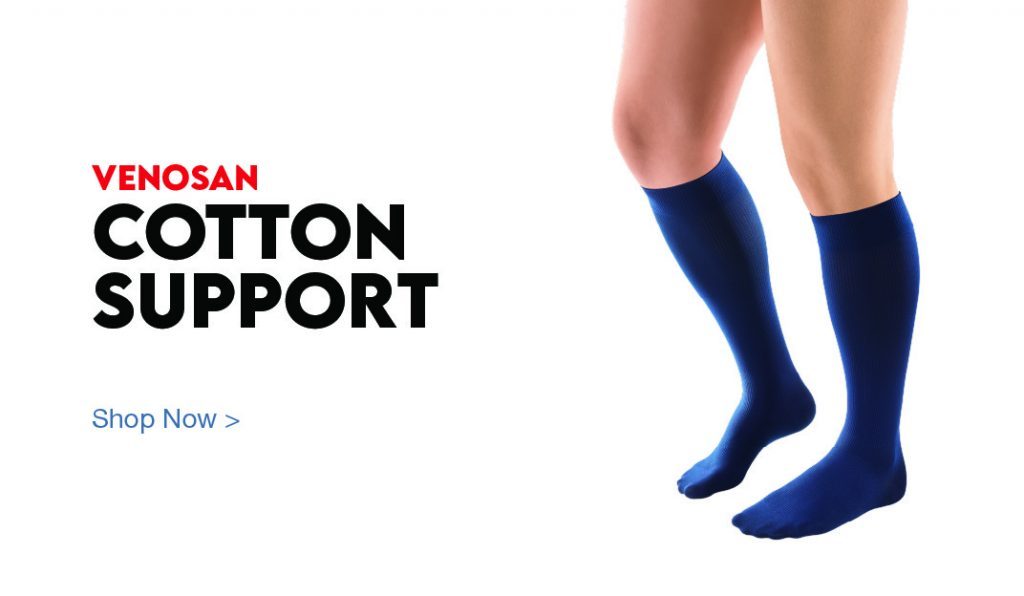Compression stockings reduce pain and heaviness in your limbs from fat disorders like lipedema, they decrease swelling in the fat throughout the limb. Medical compression also reduces the rate fat cells grow and prevent fat disorders from becoming more serious. Compression can be one of the best treatments for lipedema or fat caused by lymphatic diseases.
Compression Garments for Lipedema
Lipedema Products
Lipedema Compression
Lipedema
Lipedema is a loose connective tissue disease that primarily affects females. It is characterized by abnormal fat metabolism and accumulation of enlarged fat cells with disproportionate distribution of fat on the body. The fat tissue is usually painful, bruises easily and may have palpable nodules within it and the person may have hypermobile joints. The fatty soft tissue is loose and tends to form a “shelf” or “cuff” at the wrists or ankles. There is also poor connective tissue support for the both the soft tissue and the vasculature, which can lead to chronic lymphedema and Chronic Venous Disease (CVD). Fortunately, Medical Compression Stockings (MCS) can help provide structure and support for the soft tissues and vasculature, helping to reduce symptoms and disease progression.
Lipedema is poorly understood and grossly under recognized by the medical community and general public. Often mistaken as obesity, women who have lipedema are often blamed for the problem and told to lose weight through diet and exercise. However, diet and exercise will not reduce the fat of lipedema, although it can help the person feel better and minimize the progression and complications. Complications of untreated lipedema include CVD, Deep Vein Thrombosis (DVT), and lipolymphedema. MCS are an important intervention in each of these diseases.
Lipedema and Deep Vein Thrombosis
Deep Vein Thrombosis (DVT) is commonly referred to as a blood clot. Chances are you know someone who has had a blood clot, or you have had one yourself. A DVT can happen to anyone at any time and affects millions of people worldwide. If left untreated, it may cause serious complications or even death. Almost 17% of women with Stage 3 lipedema reported a history of a blood clot (Herbst, 2015). Wearing MCS and staying active is an important step in reducing your risk of a DVT.
Symptoms of a DVT:
DVTs can go undetected because 50% of the time there are no symptoms at all. When symptoms are present, the following are the most common:
- Pain or tenderness, often starting in the calf
- Swelling, including the ankle or foot
- Redness or noticeable discoloration
- Warmth
Lipedema Types and Stages
Lipedema is categorized into both types and stages.
Stages of Lipedema
Stage 1: Normal skin with enlarged subcutaneous tissue
Stage 2: Uneven skin with indentations in the fat; larger mounds of fat tissue (lipomas) are present
Stage 3: Large extrusions of tissue causing deformations; especially on the thighs and around the knees
Stage 4: Development of lipolymphedema with large overhangs of tissue
Types of Lipedema
Type I: Pelvis, buttocks, and hips
Type II: Buttocks to knees, with formations of folds of fat around the inner side of the knee
Type III: Buttocks to ankles
Type IV a-c:
a – Upper arm
b – Lower arm
c – Whole arm
Type V: Knees to ankles
Lipedema Treatment
Lipedema is a chronic disease with limited therapeutic options. Current treatments are aimed at managing the disease and associated symptoms. Components of lipedema treatment include:
Exercise
Exercise is a key component of conservative therapy and serves to reduce or stabilize weight, strengthen muscles, improve blood and lymph flow, and boost mental health. Commonly used exercises include low-impact workouts such as walking, lymphatic yoga, rebounding, cycling, Pilates, and aquatic exercise in a pool.
Healthy Eating
The Rare Adipose Diet, Paleo Diet, and Anti-inflammatory Diet are some that have been recommended by people with lipedema.
Support Groups
Psychosocial counseling and support groups are important due to the mental health issues associated with lipedema. Families, friends and healthcare professionals can support disease management but often also need education to understand the disease itself and the unique challenges a person with lipedema faces.
Footwear
Lack of proper footwear is very common in part due to the difficulty of finding shoes to fit unique foot and ankle shapes and the changes in walking patterns. This negatively impacts upward transport of fluid from the legs, thereby contributing to the buildup and progression of edema. A professional assessment of the feet, ankles, arches and gait mechanics are an important part of fitting with proper footwear.
Medical Compression
There are many medical compression garment options on the market and each type and stage of lipedema needs a different compression type and textile. Circular knit compression garments are thinner and more flexible and can provide support for limbs with measurements that fit within the MCS sizing range. In contrast, more incongruent limb shapes and pronounced swelling will need a more robust, stiffer textile. Velcro wraps are compression options that are easy to apply and provide excellent and robust structural support and edema containment.
Complete Decongestive Therapy
CDT is useful for the treatment of both lipedema and lymphedema. CDT is provided by a Certified Lymphedema Therapist and includes an individualized plan of treatment. Treatment components include manual lymphatic drainage (MLD), treatment of fibrotic changes in the soft tissues, multi-layered bandaging, day and night compression garment options, therapeutic exercises, education, adaptive equipment, skin care, wound management, self-care and long-term management, as well as other aspects of care.
Surgery
Two types of surgery are used in lipedema treatment, liposuction and reductive surgery. Liposuction is a surgical treatment that involves application of general or local anesthesia, and subsequent removal of adipose tissue through a straw-like device called a cannula. One end of the cannula is connected to a vacuum device, and the other end is inserted through a small incision of the skin and removes fat via aspiration.
Although liposuction has been more commonly used to treat lipedema, it is only the treatment of choice for patients with a suitable health profile and/or inadequate response to conservative therapy. Before treatment, associated deteriorating components such as edema, obesity, unhealthy lifestyle, lack of physical activity, lack of knowledge about the disease, and psychosocial distress should be addressed. Moreover, even after liposuction, medical compression is an essential component of life-long management.
Reductive surgery, also called excision and resection, is a more invasive procedure that involves excision of large localized deposits of lipedematous tissue, or lumps, possibly including the surrounding skin.
Living with Lipedema
Living well with lipedema is a process of understanding the disease and networking with skilled healthcare professionals who are knowledgeable about it. Medical compression is a key intervention in the disease management. A knowledgeable and experienced rehab professional can assist in helping you choose the compression therapy that is best for you.
- Dayan E, Kim JN, Smith ML, Seo CA, Damstra RJ, Schmeller W, Frambach Y, Carmody MA, F.ldi E, Rockson SG. Lipedema – The disease they call FAT: An overview for clinicians. Boston, MA: Lipedema Simplified Publications, The Friedman Center for Lymphedema Research and Treatment at The Center for Advanced Medicine at Northwell Health in collaboration with Lymphatic Education & Research Network (LE&RN), 2017.
- Herbst KL, Mirkovskaya L, Bharhagava A, Chava Y, Te CH. Lipedema fat and signs and symptoms of illness, increase with advancing stage. Archives of medicine. 2015;7(4-10):1-8.
- Lontok E, Briggs L, Donlan M, Kim Y, Mosley E, Riley EA, Stevens M. Lipedema: A giving smarter guide. A publication of the Milken Institute Center for Strategic Philanthropy. 2017:1-40.
- Rabe E, Guex JJ, Puskas A, Scuderi A, Fernandez FQ. Epidemiology of chronic venous disorders in geographically diverse populations: results from the Vein Consult Program. International angiology: a journal of the International Union of Angiology. 2012 Apr;31(2):105-15.
- www.worldthrombosisday.org




